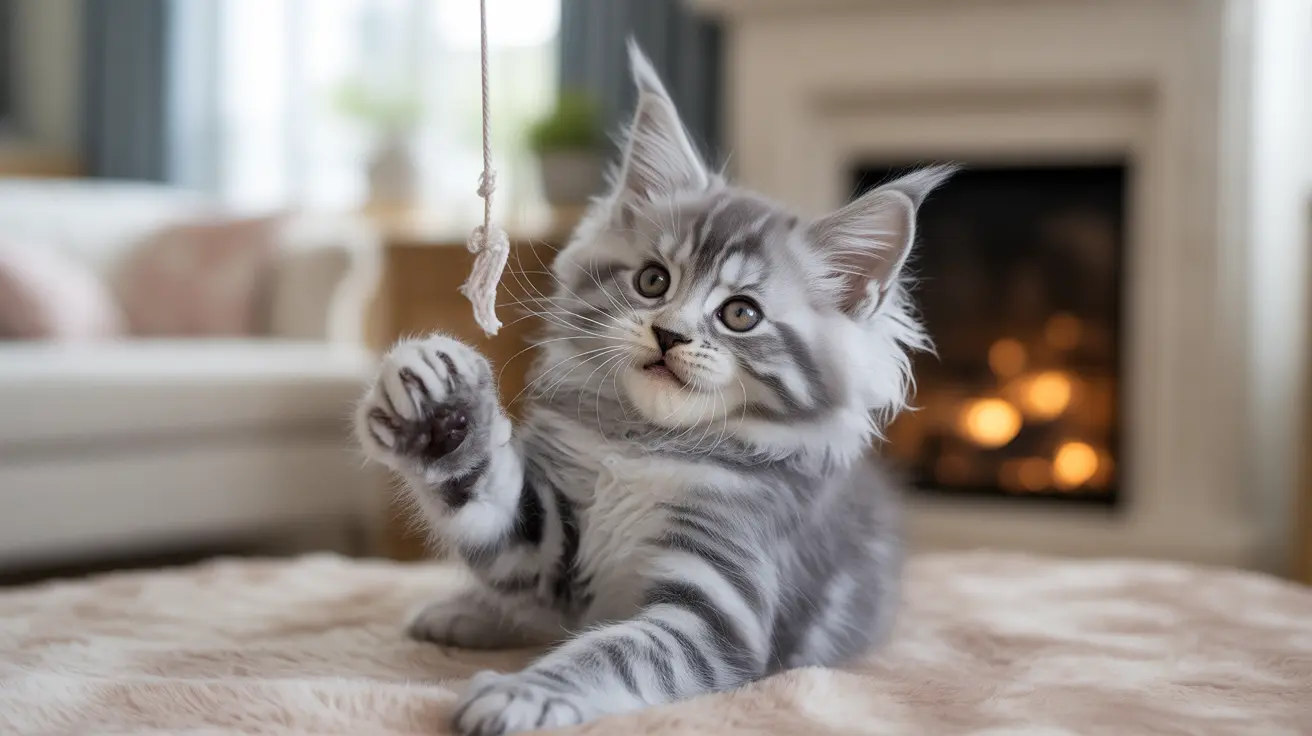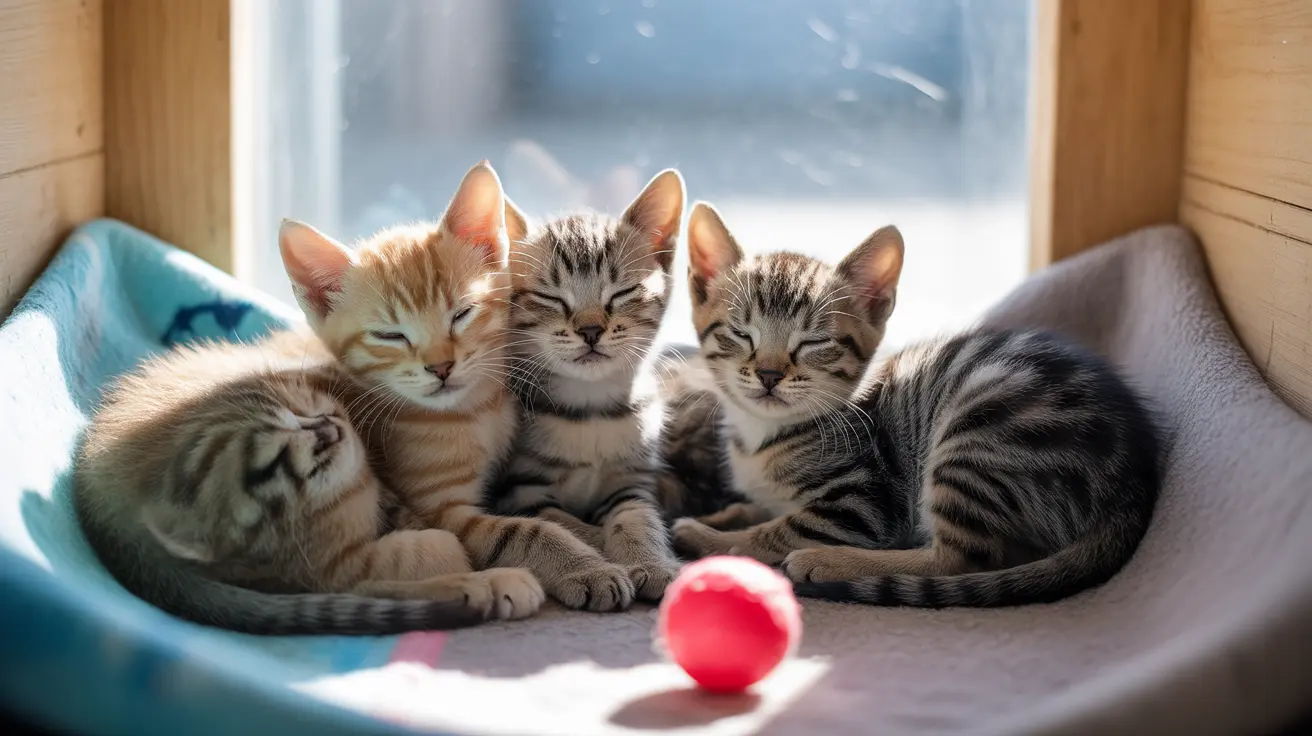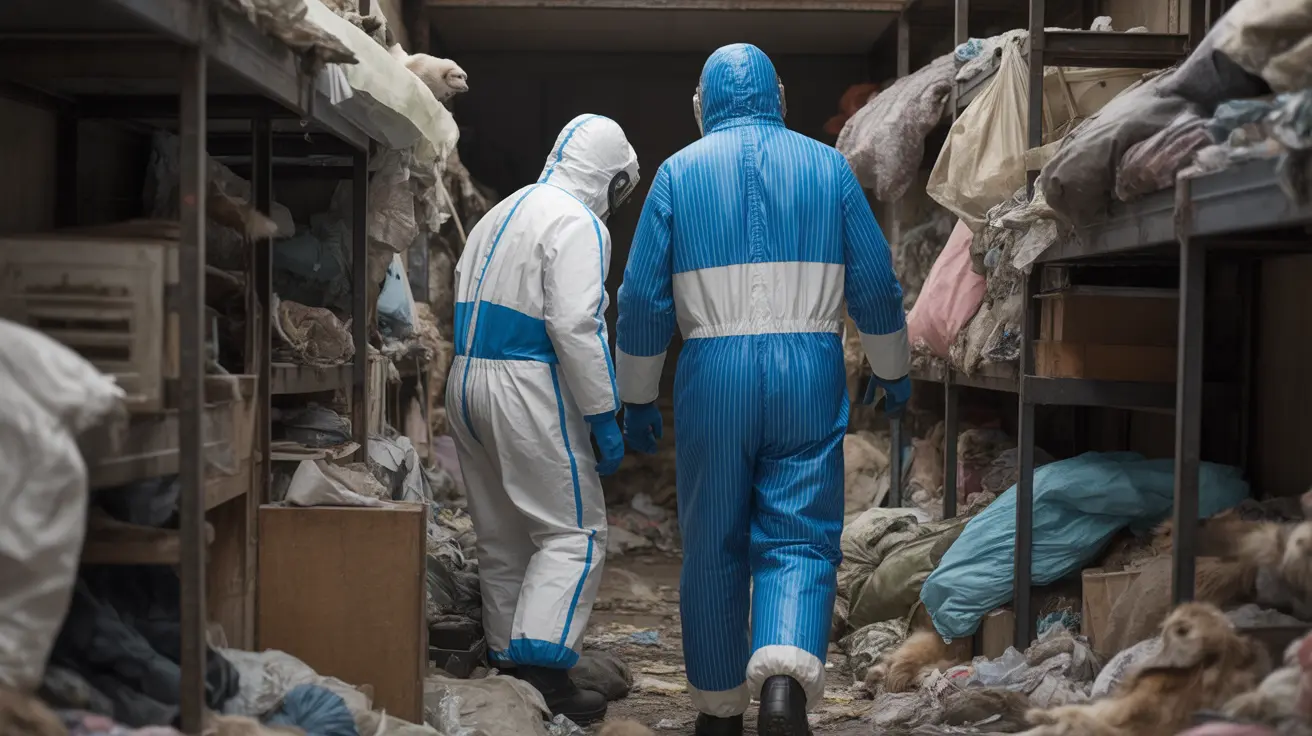What Is Fever Coat in Kittens?
Fever coat, sometimes called stress coat, is a temporary condition where kittens are born with fur that appears silvery-grey, cream-colored, or reddish, regardless of their true genetic coat color. This unusual coloration occurs when the mother cat experiences stress, illness, or fever during pregnancy, affecting how pigment develops in the kitten's fur while in the womb.
The most distinctive feature of fever coat is its unique appearance, where the fur may look frosted or have a salt-and-pepper effect. The fur typically shows darker roots with lighter tips, creating an eye-catching gradient effect that many find quite beautiful.
Causes and Development
The primary trigger for fever coat development is maternal stress or illness during pregnancy. When a pregnant cat experiences elevated body temperature or significant stress, it can temporarily disrupt the normal pigment development in her unborn kittens' fur. Common causes include:
- Viral or bacterial infections during pregnancy
- Environmental stress (moving homes, changes in household)
- Severe anxiety or trauma
- Medical conditions causing fever
The Transformation Process
One of the most fascinating aspects of fever coat is its temporary nature. As kittens grow, their true genetic coat color gradually emerges through a natural process:
- Initial weeks: Silvery or frosted appearance remains
- 4-8 months: True color begins emerging from the roots
- 6-12 months: Complete transition to genetic coat color
Impact on Kitten Health
It's crucial to understand that fever coat is purely cosmetic and doesn't indicate any health issues in the kitten itself. These kittens develop normally and are just as healthy as their traditionally-colored littermates. However, the presence of fever coat can signal that the mother experienced health challenges during pregnancy, warranting veterinary attention for her.
Care and Monitoring
While fever coat kittens don't require special care for their unique coloration, owners should:
- Document the color change process with photos
- Maintain regular veterinary check-ups
- Ensure proper nutrition during the transition period
- Monitor the mother cat's health if she's still nursing
Frequently Asked Questions
What causes a kitten to be born with a fever coat or frosted-looking fur?
Fever coat occurs when the mother cat experiences stress, illness, or fever during pregnancy, affecting pigment development in the kittens' fur while in the womb. This temporary condition results in a distinctive silvery or frosted appearance.
How can I tell if my kitten's unusual coat color is due to fever coat or another condition?
Fever coat typically appears as a uniform silvery-grey or cream color with darker roots. The condition is present from birth, and the fur will gradually change to reveal the kitten's true genetic color over time. If you're unsure, a veterinarian can confirm the diagnosis.
Will my kitten's fever coat color change over time and when will their true color show?
Yes, fever coat is temporary. The true coat color typically begins to emerge around 4-8 months of age, with complete transformation usually occurring within the first year of life.
Does fever coat in kittens indicate any health problems or risks for the kitten or mother?
Fever coat itself doesn't indicate health problems in the kitten, but it may signal that the mother experienced stress or illness during pregnancy. The kittens are otherwise healthy and develop normally.
What should I do if I suspect my pregnant cat has had a fever or stress causing fever coat in her kittens?
If you notice fever coat in newborn kittens, have the mother cat examined by a veterinarian to ensure she's healthy. While the kittens don't need special treatment, the mother may benefit from medical attention or stress reduction measures.






